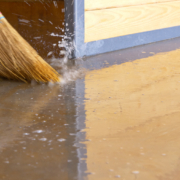Winter Insurance Check-Up: Ensuring Your Coverage is Ready for the Chill
Bundle up your peace of mind with these winter insurance check-up tips.
The Creston Valley enjoys some of the most dramatic and lovely changes of the season. Now, as the golden hues of autumn fade to the stark monochrome of winter, we look forward to cozy evenings by the fire, exhilarating winter sports, and holiday cheer. We encourage you to also consider your home and commercial coverage; a pre-winter insurance check-in is essential.
Yes, the arrival of winter brings a delicious coziness and a new outdoor recreation season. But, it also brings a host of potential hazards, from icy roads and sidewalks to heavy snowfalls and sudden melts that can lead to property damage.
Given the time of year, we want to remind you that now is the perfect time to review your insurance policies – personal and commercial. Ensure that you’re fully protected against the unexpected that the cold can bring.
Pre-winter insurance review
Our winters are beautiful! But, along with the breathtaking beauty, winter weather is often responsible for some of the most common and costly insurance claims.
Ice damage, snowmelt flooding, and other winter-related incidents can impact your home, business, automobile, and, most importantly, your peace of mind. Before the snow really flies and icicles hang from the roof, we want you to know what your current insurance policy covers and where you might need additional protection. The essentials:
Homeowners insurance: What to check
Winter-related damages: Ensure that your policy covers common winter issues like frozen pipes, ice dams on the roof, and damage due to the weight of snow or ice.
Flood insurance: In only one season, temperatures here can range from sub-zero to well above freezing – in only a few days! Standard homeowners policies typically do not cover flooding, which can occur from snowmelt. Consider adding flood insurance to your policy for comprehensive coverage.
Personal property coverage: Winter storms can cause power outages that lead to personal property damage, such as spoiled food in freezers or refrigerators. Check if your policy covers these losses.
Liability protection: Slippery sidewalks and driveways can lead to injuries. Liability coverage is a must-have to protect you if someone has an accident on your property.
Review your commercial insurance
Winter can be harsh on businesses, too. Ensure your commercial insurance policies cover winter-related damages, such as roof collapse from heavy snowfall, burst pipes, and business interruption due to severe weather events. Keep your business operations warm and toasty by updating your coverage before the winter freeze sets in.
Not surprisingly, winter increases slip-and-fall risks on your property. It’s essential to confirm that your business liability insurance is robust enough to cover accidents that icy conditions might cause. Not only does this protect patrons and employees, but it also safeguards your business from potential claims that could freeze your finances. Ensure your liability coverage is as solid as ice before winter’s chill arrives!
Auto insurance
Comprehensive coverage: This covers damage to your car that’s not caused by a collision, such as falling ice or hitting a deer, common during winter months.
Collision coverage: Slick roads lead to more accidents. Ensure your collision coverage is sufficient to cover accidents due to winter conditions.
Roadside assistance: Do you have adequate roadside assistance? Winter increases the chances of car trouble. Roadside assistance coverage can be a lifesaver if you find yourself stranded.
Tips for your insurance check-up
- List any concerns: Note any changes in your life that might affect your insurance needs, such as property improvements, wood heat, or a new car.
- Document your belongings: Update your home inventory to reflect any new purchases.
- Consult with Professionals: Reach out to your Creston Valley Insurance agent to discuss your current coverage and any recommended changes.
- Understand your policy: Don’t hesitate to ask questions about terms and conditions you’re unsure about.
We understand that insurance can sometimes seem complex, especially when preparing for something as unpredictable as winter weather. Our team is dedicated to providing you with personalized service to ensure that your coverage meets your unique needs – no matter the time of year.
Do you think you need a pre-winter insurance check-in? TALK TO US!










